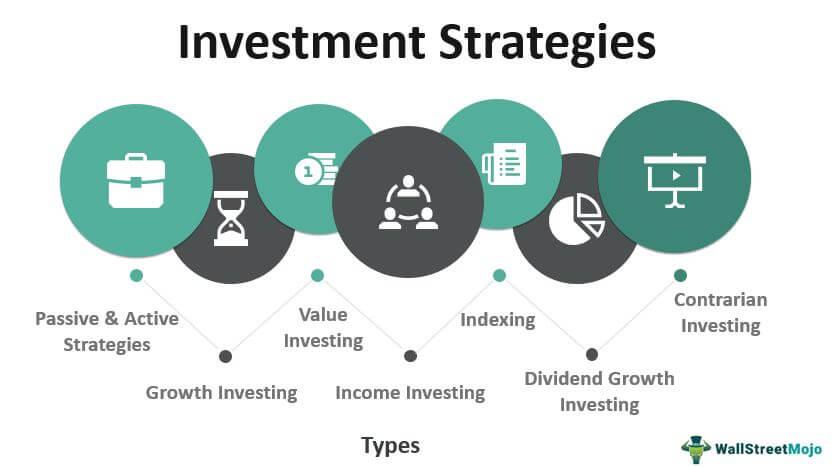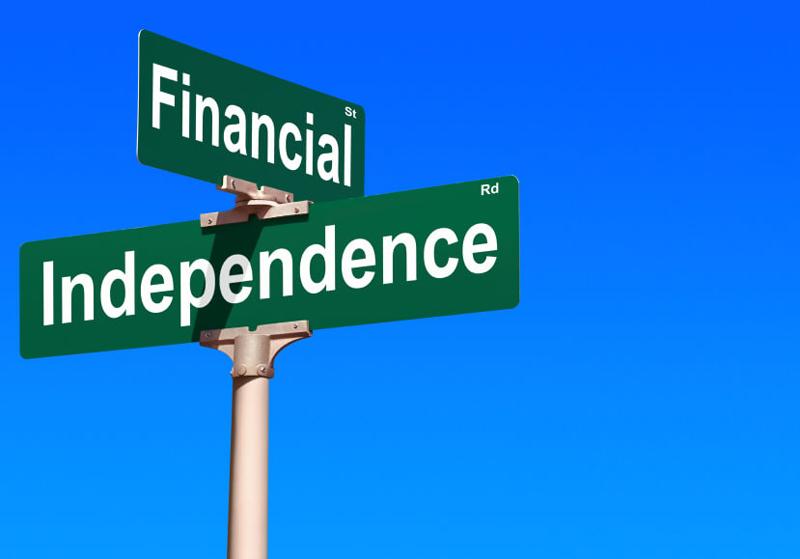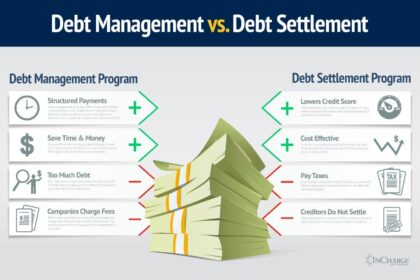In an age where financial landscapes are as unpredictable as the weather, the quest for stability takes on new urgency. Wealth preservation strategies have emerged as essential tools in the arsenal of both individuals and families striving to safeguard their hard-earned assets against the whims of inflation, market volatility, and economic downturns. As we navigate through an increasingly complex world of financial instruments and investment opportunities, understanding the art and science of wealth preservation becomes paramount. This article delves deep into the myriad strategies available—be they traditional methods or innovative approaches—offering insights and guidance for those determined to protect their wealth for generations to come. Join us on this exploration as we uncover the principles and practices that form the backbone of secure financial futures.
Budgeting Tips
Implementing a solid budgeting strategy is crucial for long-term wealth preservation. Start by tracking your income and expenses meticulously to understand your financial landscape. Utilize budgeting tools or apps that can help visualize your spending patterns. Consider these foundational tips:
- Set clear financial goals: Define short-term and long-term objectives to give your budgeting purpose.
- Prioritize savings: Aim to save at least 20% of your monthly income before allocating funds elsewhere.
- Review regularly: Take time every month to assess your budget, making necessary adjustments as your financial situation evolves.
Another effective approach is the 50/30/20 rule, which can simplify your budgeting process. Allocate your after-tax income as follows:
| Category | Percentage |
|---|---|
| Needs | 50% |
| Wants | 30% |
| Savings & Debt Repayment | 20% |
By adhering to this model, you’ll ensure that essential expenses are met while still allowing room for personal enjoyment and responsible savings. Regularly revisiting and refining your budget in light of life changes is the secret to maintaining financial security over time.

Debt Management
Navigating the intricate world of personal finance can be overwhelming, especially when managing debt. Effective strategies highlight the importance of prioritizing high-interest debts to minimize interest payments over time. Utilizing the snowball or avalanche methods can empower individuals to tackle their obligations systematically. By consolidating debts or negotiating terms with creditors, you can create a sustainable repayment plan that fits your budget. Essential tools include debt calculators and financial management apps that help you visualize your debt trajectory and make informed decisions.
Another cornerstone of effective is maintaining a disciplined budgeting approach. Consider creating a monthly budget that accounts for all income and expenditures, ensuring that you allocate sufficient funds toward debt repayment. Here are several actionable tips to enhance your budgeting strategy:
- Track Your Spending: Record all expenses to identify unnecessary spending.
- Set Realistic Goals: Establish achievable targets for debt reduction each month.
- Build an Emergency Fund: Safeguard against additional debt by saving for unforeseen expenses.

Saving for Retirement
Ensuring a comfortable and secure retirement is an essential component of wealth preservation. It’s important to approach your retirement savings with a comprehensive strategy that goes beyond merely socking away money. Consider diversifying your retirement portfolio to include a mix of assets such as stocks, bonds, and real estate. This can help mitigate risks associated with market volatility and maximize your growth potential. Additionally, regularly reviewing and adjusting your investments based on your risk tolerance and life changes is vital for long-term sustainability.
To help visualize your retirement savings journey, here’s a simplified breakdown of key components to consider in your planning:
| Component | Description |
|---|---|
| Emergency Fund | Three to six months of living expenses set aside. |
| Retirement Accounts | Maximize contributions to 401(k)s and IRAs. |
| Investment Options | Diversify among stocks, bonds, and real estate. |
| Regular Contributions | Automate monthly contributions to ensure consistency. |
By focusing on these components and creating a disciplined savings plan, you can enhance your financial security and work towards a stress-free retirement. The key is to stay informed and engaged with your financial situation, adjusting strategies as necessary to preserve and grow your wealth over time.

Emergency Fund Planning
Establishing a safety net is a critical component of any robust financial strategy. An emergency fund acts as a buffer against unexpected expenses, safeguarding your wealth and ensuring peace of mind. To effectively build this reserve, consider the following key strategies:
- Determine Your Target Amount: Aim for three to six months’ worth of essential living expenses, adjusted for your specific needs.
- Use a High-Interest Savings Account: To maximize growth, store your emergency fund in an account that offers competitive interest rates.
- Regular Contributions: Set up automatic transfers to your emergency fund, making saving a consistent habit.
- Reassess Regularly: Periodically review and adjust your target amount as your circumstances change, including changes in income, expenses, or family size.
| Expense Category | Monthly Cost | Emergency Fund Allocation |
|---|---|---|
| Housing | $1,500 | $4,500 |
| Utilities | $300 | $900 |
| Groceries | $500 | $1,500 |
| Transportation | $400 | $1,200 |
Managing your emergency fund with intention broadens its relevance to your overall financial health. This reservoir isn’t just for covering surprises; it also provides an opportunity to engage in wealth-preservation tactics. By keeping your emergency fund isolated from daily spending, you can maintain its integrity and ensure it’s available when truly needed. Consider complementing your savings with teachings from financial experts on investment options to further strengthen your financial resilience.

Investment Strategies
In today’s ever-changing economic landscape, diversification is paramount to safeguard assets against market volatility. By spreading investments across various asset classes, such as equities, bonds, real estate, and commodities, investors can mitigate potential losses. This strategy not only helps in capital preservation but also enhances the potential for growth. Here are some effective methods of diversification:
- Equities: Invest in a mix of large-cap, mid-cap, and small-cap stocks.
- Fixed Income: Incorporate government and corporate bonds for stability.
- Real Assets: Consider real estate, gold, and other tangible assets that tend to retain value.
- Alternative Investments: Explore hedge funds, private equity, and venture capital.
Another strategic approach to wealth preservation involves allocating a portion of your portfolio to cash or cash equivalents. This ensures liquidity and quick access to funds during emergencies or market downturns. By keeping a percentage in high-yield savings accounts or short-term certificates of deposit (CDs), investors can take advantage of opportunities without being forced to sell other investments at a loss. The following table highlights some options for cash equivalents:
| Investment Type | Potential Yield | Liquidity |
|---|---|---|
| High-Yield Savings Account | 1.5% – 2% | High |
| Money Market Fund | 1% – 2.5% | High |
| Short-Term CD | 1.2% – 2.5% | Moderate |

Stock Market Investing
Investing in the stock market requires a strategic approach to ensure that your wealth remains intact amidst market volatility. It’s essential to diversify your portfolio to mitigate risks associated with individual stocks. A well-rounded strategy includes holding a mix of stocks, bonds, and alternative investments. Here are some key practices that can enhance wealth preservation:
- Asset Allocation: Balance between equities and fixed assets based on your risk tolerance.
- Sector Diversification: Distribute investments across different sectors to avoid overexposure.
- Regular Rebalancing: Periodically review and adjust your portfolio to maintain desired asset proportions.
- Defensive Stocks: Consider investing in companies that consistently perform well during down markets, such as consumer staples.
Moreover, understanding market cycles and sentiment can also play a crucial role in investment decisions. Analyzing historical trends provides insights into how various sectors react in different economic environments. This can guide you in selecting the right time to invest or withdraw from certain positions, leading to effective wealth preservation. Below is a simple illustration of market cycle phases:
| Market Phase | Description |
|---|---|
| Expansion | Characterized by rising economic activity and increasing stock prices. |
| Peak | The highest point before a downturn; markets may become overvalued. |
| Recession | A period of declining economic activity; stock prices typically fall. |
| Trough | The lowest point before recovery; opportunities for bargain investing. |

Real Estate Investment
Investing in real estate is an astute method of wealth preservation, offering both tangible assets and a hedge against inflation. This sector can provide a robust return on investment while simultaneously safeguarding financial resources from the volatility of markets. Here are some benefits that underscore its significance in a diversified portfolio:
- Cash Flow: Rental properties generate steady income, providing liquidity while enriching asset value.
- Appreciation: Over time, real estate typically appreciates, contributing to long-term wealth.
- Tax Advantages: Property owners can enjoy various tax benefits, including depreciation and deducting mortgage interest.
- Portfolio Diversification: Real estate can diversify an investment portfolio, spreading risk across various assets.
To maximize the efficacy of real estate as a wealth preservation strategy, investors should consider location, property type, and market trends. It’s crucial to stay informed about economic indicators and demographic shifts that can impact real estate values. A simple comparison table can highlight key factors for making smart investment choices:
| Factor | Importance |
|---|---|
| Location | High |
| Property Condition | Medium |
| Market Trends | High |
| Financial Stability | Critical |

Credit Score Improvement
Improving your credit score is a crucial component of any wealth preservation strategy. A higher credit score not only opens doors to lower interest rates on loans but also enhances your overall financial standing. To embark on this journey, consider focusing on these key areas:
- Payment History: Consistently pay your bills on time to maintain a positive payment record.
- Credit Utilization: Aim to keep your credit card balances below 30% of your total credit limit to show responsible use.
- Age of Credit Accounts: The longer your accounts have been active, the better it is for your score.
- Credit Mix: Utilize different types of credit, such as installment loans and revolving credit, to diversify your profile.
- Limit New Credit Inquiries: Too many hard inquiries can temporarily lower your score.
Regularly monitoring your credit report is essential in this improvement process. It equips you with the knowledge to dispute any inaccuracies and better understand your financial habits. Many financial institutions offer tools to keep track of your credit score, allowing you to take action swiftly. Below is a simple table showing how various factors influence your score:
| Factor | Impact on Score |
|---|---|
| Payment History | 35% |
| Credit Utilization | 30% |
| Length of Credit History | 15% |
| New Credit | 10% |
| Credit Mix | 10% |

Financial Independence
Achieving financial freedom is not merely about accumulating wealth; it’s also about safeguarding it from market volatility and unexpected life changes. Effective wealth preservation strategies allow individuals to maintain their financial stability while pursuing opportunities for growth. Here are some vital techniques to consider:
- Diversification: Spread investments across different asset classes to reduce risk.
- Emergency Fund: Build a reserve that covers 6-12 months of living expenses to cushion financial shocks.
- Insurance: Secure adequate coverage for health, life, and property to protect against unforeseen circumstances.
- Tax Planning: Utilize tax-advantaged accounts and strategies to minimize tax liabilities.
- Regular Reviews: Periodically assess financial plans to adapt to changing circumstances and goals.
Additionally, incorporating alternative investments can play a crucial role in wealth preservation. By exploring assets that are less correlated with traditional markets, investors can further shield their portfolios from economic downturns. Consider the following alternatives:
| Investment Type | Benefits |
|---|---|
| Real Estate | Income generation and asset appreciation. |
| Precious Metals | Store of value during inflation. |
| Cryptocurrencies | Potential for high returns and decentralization. |
| Art and Collectibles | Diversification with tangible assets. |

Passive Income Streams
Building multiple income avenues can significantly enhance your financial resilience and serve as a buffer against market volatility. Here are some effective ideas for generating passive income that can contribute to your wealth preservation strategy:
- Dividend Stocks: Invest in blue-chip companies known for consistent dividend payouts.
- Real Estate Rentals: Consider purchasing rental properties or entering a Real Estate Investment Trust (REIT) to earn monthly income.
- Peer-to-Peer Lending: Utilize online platforms to lend money for personal loans, earning interest on your investments.
- Digital Products: Create and sell e-books, online courses, or stock photography that generate revenue over time.
In addition to these traditional methods, diversifying your passive income sources can provide even greater stability. Below is a table highlighting some modern approaches alongside their potential benefits:
| Passive Income Source | Benefits |
|---|---|
| Affiliate Marketing | Earn commissions by promoting products or services on your website. |
| Investing in Index Funds | Low-cost investment with potential for steady returns over time. |
| Creating a Blog | Monetize through ads and sponsored content while sharing your expertise. |
| Developing an App | Generate revenue from in-app purchases or ads after initial development. |

Tax Planning
Effective financial stewardship involves not only wealth accumulation but also prudent . This aspect of financial strategy ensures that you can protect the funds you’ve worked so hard to gather. Here are some key avenues to explore:
- Maximize Contributions: Utilize tax-advantaged accounts, such as IRAs and 401(k)s, to decrease taxable income while saving for retirement.
- Tax-Loss Harvesting: Offset gains by selling underperforming investments within your portfolio, which can help reduce your overall tax burden.
- Tax Credits and Deductions: Stay informed about available credits that can directly reduce tax liability and take advantage of deductions to lower taxable income.
Additionally, understanding your tax bracket and planning accordingly can create significant savings opportunities. Below is a simple overview of typical tax brackets:
| Filing Status | Tax Rate |
|---|---|
| Single | 10% – 37% |
| Married Filing Jointly | 10% – 37% |
| Head of Household | 10% – 35% |

Retirement Accounts (IRA, 401k)
In the pursuit of wealth preservation, retirement accounts like IRAs and 401(k)s emerge as foundational pillars, offering not just savings but robust tax advantages that bolster long-term financial security. These accounts allow individuals to set aside funds for retirement while enjoying the benefits of tax-deferred growth. The Individual Retirement Account (IRA) and the 401(k) are both powerful tools, each with unique features that cater to different financial strategies. With IRAs, individuals can choose either a traditional or Roth account, enabling flexibility in tax payment choices—contributions to traditional IRAs are tax-deductible, while Roth contributions grow tax-free. On the other hand, 401(k)s, typically employer-sponsored, often come with matching contributions, which can significantly amplify your retirement savings.
To understand how these accounts can be optimized for wealth preservation, consider the following advantages of each:
- Tax Advantages: Both accounts offer significant tax benefits that can enhance your overall retirement portfolio.
- Compound Growth: Funds within these accounts grow without immediate tax implications, allowing for exponential growth over time.
- Diversification Opportunities: IRAs and 401(k)s can be invested in various assets, helping to spread risk.
To further illustrate the differences and benefits of these retirement accounts, consider the following table:
| Feature | IRA | 401(k) |
|---|---|---|
| Contribution Limits | $6,000 (or $7,000 if over age 50) | $19,500 (or $26,000 if over age 50) |
| Employer Match | No | Often Available |
| Tax Treatment | Traditional & Roth options | Pre-tax contributions only |

Financial Planning for Families
Effective financial planning is crucial for families looking to secure their future. Implementing strong wealth preservation strategies can help families safeguard their hard-earned assets against potential adversities. One of the fundamental approaches is to establish an emergency fund that covers at least three to six months of living expenses. This cushion can provide peace of mind during unforeseen circumstances, such as job loss or medical emergencies. Additionally, consider diversifying your investments across different asset classes—such as stocks, bonds, and real estate—to mitigate risk. Here are some essential strategies to consider:
- Estate Planning: Create a will and consider trusts to manage your estate efficiently.
- Insurance Coverage: Invest in relevant insurance policies like health, life, and property to protect your family’s assets.
- Retirement Accounts: Contribute to retirement savings plans, such as 401(k)s or IRAs, to ensure long-term financial stability.
- Tax-Advantaged Investments: Explore options like 529 plans for education savings and municipal bonds for tax benefits.
In today’s economic climate, it is also wise for families to keep track of their net worth actively. Knowing where you stand financially can aid in making informed decisions about where to allocate resources. Below is a simple table structure to help visualize your assets versus liabilities:
| Assets | Liabilities |
|---|---|
| Home Equity | Mortgage Balance |
| Savings Accounts | Credit Card Debt |
| Investments | Student Loans |
By regularly assessing both your assets and liabilities, you can adopt a proactive approach to family financial planning, ensuring that your wealth is not just preserved but also grown for future generations.

Personal Finance Apps
In today’s fast-paced world, effectively managing personal finance is crucial for ensuring long-term wealth preservation. A variety of apps can simplify this process, providing users with tools to track expenses, manage budgets, and set savings goals. With their intuitive interfaces and cutting-edge features, these applications help users stay on top of their financial health while making informed decisions. Here are a few key benefits of utilizing :
- Real-time tracking: Monitor your income and expenditures instantly.
- Budgeting tools: Set personalized budgets tailored to your financial goals.
- Investment tracking: Keep tabs on your investment portfolios and their performance.
- Financial reports: Generate comprehensive reports to visualize your financial progress.
Choosing the right app can be pivotal in crafting a sustainable financial future. To assist in making an informed decision, consider evaluating different applications based on key features and user reviews. The comparison below highlights some popular and their primary functionalities:
| App Name | Key Features | User Rating |
|---|---|---|
| Mint | Budgeting, bill tracking | 4.5/5 |
| YNAB (You Need A Budget) | Proactive budgeting, goal setting | 4.7/5 |
| Personal Capital | Investment tracking, retirement planning | 4.6/5 |

Student Loan Repayment
Managing s effectively can be a crucial part of any wealth preservation strategy. By prioritizing how you handle these debts, you can free up more financial resources for investments and savings. Consider the following approaches:
- Income-Driven Repayment Plans: Explore repayment options based on your income, which can lower monthly payments.
- Loan Forgiveness Programs: Investigate eligibility for forgiveness programs, especially if working in public service or specific professions.
- Extra Payments: If possible, make additional payments towards the principal to reduce total interest paid over time.
Additionally, it’s vital to keep track of your loans and their interest rates. Using a simple comparison can help you decide whether refinancing makes sense. Below is an example of how you might break down your loans:
| Loan Type | Interest Rate | Current Balance |
|---|---|---|
| Federal Direct Loan | 4.5% | $15,000 |
| Private Loan | 6.8% | $10,000 |
| Grad PLUS Loan | 7.0% | $20,000 |
By maintaining a clear overview of your loans and strategically approaching repayments, you can safeguard your future financial health while actively working towards your wealth preservation goals.

Debt-Free Journey
Embarking on a financial path can be overwhelming, but with a sprinkle of strategic thought, it becomes a journey worth taking. One of the fundamental approaches to ensuring that your hard-earned money is not only protected but also purposefully directed towards growth is by implementing wealth preservation strategies. These strategies prioritize stability and security, allowing you to enjoy life while safeguarding your assets. Consider the following essential tactics:
- Diversification of Investments: Spread your investments across a variety of asset classes, including stocks, bonds, and real estate, to reduce risk.
- Emergency Fund: Maintain a liquid reserve that can cover 3-6 months of expenses, ensuring peace of mind during uncertain times.
- Insurance Coverage: Regularly review and update your insurance policies to protect against unforeseen events.
Monitoring and adjusting your financial strategies is crucial to adapting to changing circumstances. By regularly reviewing your financial situation and staying updated on market conditions, you can make informed decisions that align with your long-term goals. To visualize these strategies effectively, here’s a simple overview:
| Strategy | Purpose |
|---|---|
| Diversification | Minimize risk by spreading investments |
| Emergency Fund | Provide financial security in crisis |
| Insurance Review | Ensure adequate protection against loss |

Credit Card Management
Effective management of credit cards is essential in preserving wealth, as it not only impacts your credit score but also plays a significant role in your overall financial health. By implementing a strategic approach, individuals can leverage credit cards to enhance their purchasing power while avoiding unnecessary debt. Here are some practical strategies to consider:
- Create a Budget: Establish a monthly budget that includes your credit card payments to ensure you’re living within your means.
- Pay Balances in Full: Whenever possible, pay off your credit card balances in full each month to avoid high-interest charges.
- Utilize Rewards Wisely: Take advantage of credit card rewards programs, but focus on those that align with your spending habits.
- Set Up Alerts: Use alerts to keep track of due dates and spending limits to avoid late fees and over-limit charges.
Moreover, monitoring your credit utilization ratio is crucial. This ratio is the percentage of your available credit that you are currently using. Keeping this below 30% can significantly boost your credit score, which can lead to lower interest rates on loans and better financial opportunities. An effective way to manage this is to:
| Credit Limit | Current Balance | Utilization Ratio |
|---|---|---|
| $5,000 | $1,200 | 24% |
| $3,000 | $900 | 30% |
| $10,000 | $2,000 | 20% |
By following these guidelines and staying proactive about credit management, you can protect and grow your wealth effectively over time.

Budgeting for Freelancers
Effective money management is crucial for freelancers, who often face the unpredictability of variable income. Setting a realistic budget should be your first step; this involves analyzing your earnings over the past months to identify trends and potential high- and low-earning periods. To assist with this, consider creating a simple table to track your monthly income and expenses:
| Month | Income | Expenses | Net Savings |
|---|---|---|---|
| January | $3,000 | $2,000 | $1,000 |
| February | $2,500 | $1,800 | $700 |
Aside from budgeting, it’s also essential to set aside funds for taxes, retirement, and unexpected expenses. Establishing an emergency fund equal to at least three to six months of living expenses can offer peace of mind. Along with this, implement the following strategies:
- Track every expense: Use apps or spreadsheets to monitor spending patterns.
- Automate savings: Consider setting up automatic transfers to a savings account after each paycheck.
- Review and adjust: Regularly assess your budget and savings goals, making adjustments as your situation changes.

Frugal Living Tips
Embracing a lifestyle of frugality doesn’t mean sacrificing quality or comfort; instead, it emphasizes making wiser choices to preserve your wealth effectively. Start by evaluating your monthly expenses and identifying areas where you can cut back. Consider utilizing coupons and cashback apps for your shopping, which can significantly lower your bills without compromising on the products you love. Another effective strategy is to cultivate a habit of meal planning, allowing you to make the most of your grocery budget while reducing food waste.
Furthermore, investing in sustainable options can lead to long-term savings. Reusable products such as water bottles, shopping bags, and containers not only decrease ongoing expenses but also contribute to a healthier planet. Explore the benefits of DIY projects — from household cleaners to personal care items, crafting your own can cut costs dramatically. To visualize your savings progression, track them regularly in a simple table:
| Expense Category | Before Savings | After Savings | Total Savings |
|---|---|---|---|
| Groceries | $400 | $300 | $100 |
| Utilities | $150 | $120 | $30 |
| Entertainment | $100 | $70 | $30 |
| Total | $650 | $490 | $160 |

Side Hustles for Extra Income
In the pursuit of strengthening your financial foundation, engaging in side hustles can serve as a pivotal strategy for additional income. From leveraging your existing skills to exploring new interests, there are numerous avenues to generate revenue without committing to a full-time role. Consider opportunities in the freelance arena, such as:
- Graphic Design: Utilize platforms like Fiverr or Upwork to showcase your artistic talents.
- Content Writing: Write articles or blog posts for various websites and publications.
- Online Tutoring: Share your knowledge in subjects you excel at through virtual tutoring sessions.
- Handmade Crafts: Sell your artisanal creations on Etsy or at local craft fairs.
Additionally, side hustles can help diversify your income streams, providing financial security and flexibility. By examining potential market demands, you can identify lucrative opportunities. Here’s a brief overview of popular side hustles and their potential monthly earnings:
| Side Hustle | Potential Monthly Income |
|---|---|
| Freelance Writing | $500 – $3,000 |
| Online Tutoring | $1,000 – $4,000 |
| Virtual Assistance | $300 – $2,500 |
| Social Media Management | $400 – $2,200 |

Financial Literacy Education
Understanding the principles of wealth preservation is essential for sustaining financial health in an ever-changing economic landscape. To effectively safeguard your assets, consider implementing strategies such as diversification, which spreads investments across various asset classes, reducing risks associated with market fluctuations. Additionally, creating an emergency fund is vital; it provides a buffer against unforeseen expenses and prevents the need to liquidate investments during unfavorable market conditions. Other key strategies include:
- Regular portfolio reviews: Assessing your investments ensures they align with your long-term goals.
- Tax-efficient investing: Minimizing tax liabilities helps preserve wealth over time.
- Insurance policies: Proper coverage protects against significant financial losses that could jeopardize your financial stability.
To visualize how different strategies can contribute to overall wealth preservation, consider the following table that highlights various asset allocation techniques and their associated risks:
| Asset Class | Risk Level | Potential Return |
|---|---|---|
| Stocks | High | 8-10% |
| Bonds | Medium | 4-6% |
| Real Estate | Medium | 6-8% |
| Cash Equivalents | Low | 1-2% |
By carefully selecting a mix of these asset classes, you can create a robust financial strategy that not only preserves your wealth but also builds it for future generations. Embrace the journey of financial literacy and start taking control of your financial destiny today.

Insurance Planning
Effective is a cornerstone of any robust wealth preservation strategy. It ensures that your hard-earned assets are safeguarded against unforeseen events that could jeopardize your financial stability. By assessing your unique circumstances, you can select the right mix of insurance products to cover potential risks. Here are some key elements to consider:
- Life Insurance: Protect your family’s financial future in case of unexpected demise.
- Health Insurance: Safeguard against rising medical costs that can deplete savings.
- Property & Casualty Insurance: Ensure your valuable assets like home and vehicles are adequately insured against damages or losses.
- Long-Term Care Insurance: Plan for potential healthcare expenses as you age.
To visualize your insurance needs, it can be helpful to lay out your current coverage alongside potential risks. Below is a simple table format that illustrates how to allocate your insurance resources effectively:
| Insurance Type | Coverage Amount | Purpose |
|---|---|---|
| Life Insurance | $500,000 | Family protection |
| Health Insurance | $1,000,000 | Medical expenses |
| Home Insurance | $300,000 | Property damage |
| Long-Term Care Insurance | $200,000 | Elder care costs |

Long-Term Wealth Building
Building wealth isn’t merely about accumulating assets; it’s about strategically managing what you have over the long term. A critical aspect of this journey is to create a robust framework that prevents the erosion of your financial base. Here are several key strategies:
- Diversification: Spread your investments across various asset classes to mitigate risk.
- Regular Review: Periodically assess your financial plan and adjust as necessary to stay aligned with your goals.
- Emergency Fund: Maintain a fund with at least 3-6 months of living expenses to weather unexpected financial storms.
- Tax Optimization: Consider strategies that allow you to minimize tax liabilities while maximizing growth.
Incorporating these strategies helps in creating a solid foundation for sustainable wealth. Additionally, it’s essential to invest in education and stay informed about market trends. A wise approach to wealth preservation can involve:
| Educational Resources | Benefits |
|---|---|
| Financial Literacy Workshops | Enhances understanding of investment strategies. |
| Online Investment Courses | Provides insights into modern market trends. |
| Savings & Investment Apps | Helps in tracking financial progress seamlessly. |

Saving for College
Planning for a child’s higher education can often feel like a daunting Financial feat, but it can be made simpler with effective strategies. One of the key avenues for saving is to open a 529 college savings plan. This allows your investments to grow tax-free when used for qualified education expenses, such as tuition, books, and room and board. Other saving options include Coverdell Education Savings Accounts, which offer tax advantages similar to 529 plans, and custodial accounts that allow you to save and invest on behalf of your child until they reach adulthood. Here are some essential steps to consider:
- Set clear savings goals based on anticipated college costs.
- Research various savings plans to find what fits your financial situation.
- Automate contributions to ensure consistency and growth over time.
Understanding the potential growth of your savings can be enhanced through certain financial tools. For example, consider using an interest-bearing savings account to place your funds in a secure, yet productive environment. Also, take advantage of financial literacy resources such as workshops and online classes that can provide valuable insights into effective investment strategies. Below is a simple table comparing some popular college funding options:
| Plan Type | Tax Benefits | Contribution Flexibility |
|---|---|---|
| 529 Plan | Tax-free growth | Varies by state |
| Coverdell ESA | Tax-free growth | Annual contribution limit |
| Custodial Account | No specific tax benefits | Flexible contributions |

Estate Planning
When it comes to safeguarding your wealth for future generations, a comprehensive plan is essential. Effective wealth preservation involves meticulous strategies that protect your assets from potential threats, such as taxation, divorce, or unforeseen legal issues. Some key components include:
- Wills and Trusts: Establishing a clear will or a revocable living trust can help dictate the distribution of your assets and minimize the risks of probate.
- Insurance Policies: Utilizing life insurance, long-term care insurance, and liability coverage can shield against financial risks.
- Tax Strategies: Employing tax-efficient investment vehicles and understanding the implications of estate taxes ensures that more of your wealth is retained.
- Asset Protection Structures: Using LLCs or other legal entities can help protect personal assets from business liabilities.
Additionally, engaging in regular reviews of your wealth preservation plans is crucial to adapt to changing laws and personal circumstances. Maintaining an open line of communication with family members about your estate plans can prevent confusion and conflicts later on. Consider the following approaches for optimal effectiveness:
| Approach | Description |
|---|---|
| Generational Trusts | Allows for wealth distribution over multiple generations while protecting assets from creditors. |
| Family Limited Partnerships | Facilitates easier management of family assets and can provide certain tax benefits. |
| Charitable Giving | A strategic way to reduce taxable estate value while supporting causes you care about. |

Financial Goals Setting
Setting financial goals is a crucial step in ensuring the longevity and integrity of your wealth. Begin by identifying both your short-term and long-term objectives, which may include saving for a home, planning for retirement, or even funding a child’s education. Establishing clear, measurable targets will enable you to track your progress and make informed decisions. Consider utilizing the SMART criteria—ensuring that your goals are Specific, Measurable, Achievable, Relevant, and Time-bound—to create a solid financial roadmap. Additionally, consult with a financial advisor to align your strategies with current market conditions and personal aspirations.
Once your goals are set, prioritize the allocation of your resources to safeguard your assets against unforeseen events. This can involve diversifying your investment portfolio, investing in tax-advantaged accounts, and continuously monitoring your financial health. Create a personal finance checklist that includes:
- Emergency Fund: Aim to save at least 3-6 months of living expenses.
- Insurance: Review your policies to ensure adequate coverage for health, property, and life.
- Debt Management: Focus on paying off high-interest debts first.
| Goal Type | Timeframe | Estimated Amount |
|---|---|---|
| Savings for Home | 5 years | $50,000 |
| Retirement Fund | 20 years | $500,000 |
| Education Fund | 10 years | $30,000 |

Money Management for Couples
Effective wealth preservation strategies are essential for couples looking to secure their financial future together. By adopting a proactive approach, partners can maintain and grow their assets while minimizing risks. A well-rounded plan should include a mix of investments, insurance, and savings, promoting a sense of financial security for both partners. Consider these key strategies:
- Diversification: Spread investments across various asset classes to mitigate risk.
- Emergency Fund: Aim for 3-6 months’ worth of expenses in a high-yield savings account.
- Insurance Coverage: Review life, health, and property insurance to protect against unforeseen events.
- Tax Planning: Utilize tax-advantaged accounts to maximize savings and investments.
- Regular Financial Check-ins: Schedule monthly meetings to discuss finances and adjust strategies as needed.
Creating a shared financial vision involves both partners being on the same page regarding their goals and risk tolerance. Setting long-term objectives can help streamline decision-making and encourage collaborative efforts in achieving financial independence. The following table encapsulates essential goals and shared responsibilities that can guide couples in their wealth preservation journey:
| Financial Goal | Shared Responsibility |
|---|---|
| Savings Target | Monthly contributions from both partners |
| Investment Growth | Research and adjust investment vehicles |
| Debt Reduction | Create a joint repayment plan |
| Retirement Planning | Regularly review and adjust retirement accounts |

Family Budgeting
Effective is a cornerstone of any wealth preservation strategy. By carefully tracking income and expenses, families can create a roadmap that guides financial decisions and prioritizes savings. This approach not only ensures that essentials are covered but also allows families to allocate funds toward savings and investment opportunities. Consider implementing the following tactics to enhance your budgeting process:
- Set Specific Financial Goals: Define both short-term and long-term objectives, such as emergency funds or retirement savings.
- Utilize Budgeting Tools: Leverage apps and spreadsheets to monitor spending and adjust as necessary.
- Regular Reviews: Schedule monthly budget reviews to identify trends and make informed adjustments.
Additionally, it is important to cultivate a mindset of frugality without sacrificing quality of life. Families can actively engage in finding flexible yet effective ways to stretch their incomes. Here are some practical steps to consider:
- Evaluate Subscription Services: Review and eliminate unused services to free up cash flow.
- Plan Meals and Shop Wisely: Create weekly meal plans that leverage sales and seasonal produce to minimize grocery bills.
- Invest in Education: Encourage financial literacy through books or workshops to empower all family members in budgeting.

Smart Spending Habits
Adopting effective financial strategies can transform your approach to spending, allowing you to protect and grow your wealth over time. Here are a few key principles to integrate into your daily life:
- Create a budget: Track income and expenses meticulously to identify areas for improvement.
- Prioritize needs over wants: Distinguish between essential purchases and discretionary spending to avoid impulse buys.
- Take advantage of rewards: Use credit cards wisely, opting for those that offer cashback or other benefits, while ensuring to pay off the balance regularly.
- Shop smarter: Utilize discounts, compare prices, and explore second-hand options for significant savings.
Additionally, regularly reviewing your spending patterns can help align them with your long-term financial goals. You might find it useful to establish a system for evaluating large purchases:
| Question | Yes | No |
|---|---|---|
| Will this purchase add long-term value? | ✓ | ✕ |
| Is it within my budget? | ✓ | ✕ |
| Have I researched alternatives? | ✓ | ✕ |
| Do I need it immediately? | ✕ | ✓ |

Personal Finance for Millennials
In today’s unpredictable economic environment, millennials must adopt effective strategies to safeguard their hard-earned wealth. One essential approach is to diversify investment portfolios. By spreading assets across various asset classes, such as stocks, bonds, real estate, and even cryptocurrencies, individuals can reduce exposure to market volatility. Consider these diversification tactics:
- Invest in low-cost index funds to gain broad market exposure.
- Explore real estate investment trusts (REITs) for property market access without direct ownership.
- Allocate funds to commodities, such as gold or silver, as a hedge against inflation.
Another crucial element of wealth preservation is establishing an emergency fund. This financial cushion can prevent the need to liquidate investments during market downturns. Create a goal to save at least three to six months’ worth of living expenses in a high-yield savings account to ensure accessibility and growth. Furthermore, implementing a financial wellness checkup can help maintain budgetary discipline:
| Checkup Item | Frequency |
|---|---|
| Review budget and expenses | Monthly |
| Assess investment performance | Quarterly |
| Rebalance portfolio | Annually |
Creating a proactive plan that incorporates these components can significantly enhance financial security for millennials navigating the complexities of modern finance.

Wealth Preservation Strategies
In an ever-changing economic landscape, implementing effective strategies for protecting your wealth is essential. Diversification is one of the most fundamental approaches, allowing you to spread your assets across various investment vehicles. This can include stocks, bonds, real estate, and commodities, thereby reducing the risk associated with market volatility. Additionally, consider allocating a portion of your portfolio to alternative investments, such as private equity or hedge funds, which can sometimes provide protection during market downturns.
Another critical strategy involves understanding the tax implications of your investments. Utilizing tax-efficient accounts like IRAs and 401(k)s can help you preserve wealth by minimizing tax liabilities. Also, consider engaging in estate planning to ensure your wealth is distributed according to your wishes while maximizing tax benefits for your heirs. The following table illustrates strategic options and their potential advantages:
| Strategy | Potential Advantage |
|---|---|
| Diversification | Reduced risk of loss |
| Tax-efficient accounts | Minimized tax contributions |
| Estate Planning | Controlled asset distribution |
| Alternative Investments | Potential for higher returns |
In Summary
In a world of uncertainties and shifting economic landscapes, the importance of wealth preservation strategies cannot be underestimated. As we’ve explored, these strategies encompass a diverse range of approaches, from diversifying investments to protecting assets and aligning financial goals with personal values. They serve not just as a safety net but as a proactive roadmap, guiding you towards resilience in the face of change.
As you consider the pathways laid out in this article, remember that wealth preservation isn’t merely about safeguarding what you have; it’s about nurturing and enhancing your financial legacy for future generations. Whether you are a seasoned investor or just beginning to build your portfolio, embracing these strategies can empower you to navigate challenges with confidence.
In closing, take the time to reflect on your current financial landscape. Engage with professionals, ask questions, and remain adaptable. The road to wealth preservation is not a one-size-fits-all journey; it’s a tailored endeavor, uniquely shaped by your aspirations, circumstances, and willingness to learn. May your efforts not only protect your wealth but enrich your life in meaningful ways, ensuring that your financial foundation remains strong for years to come.




